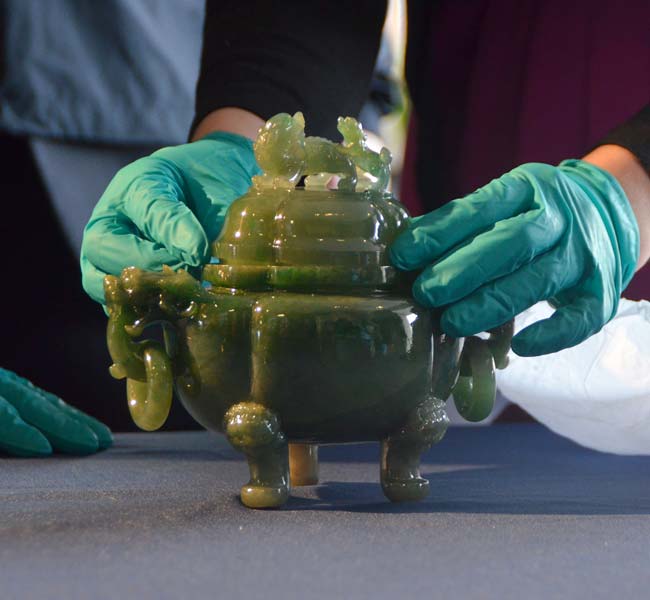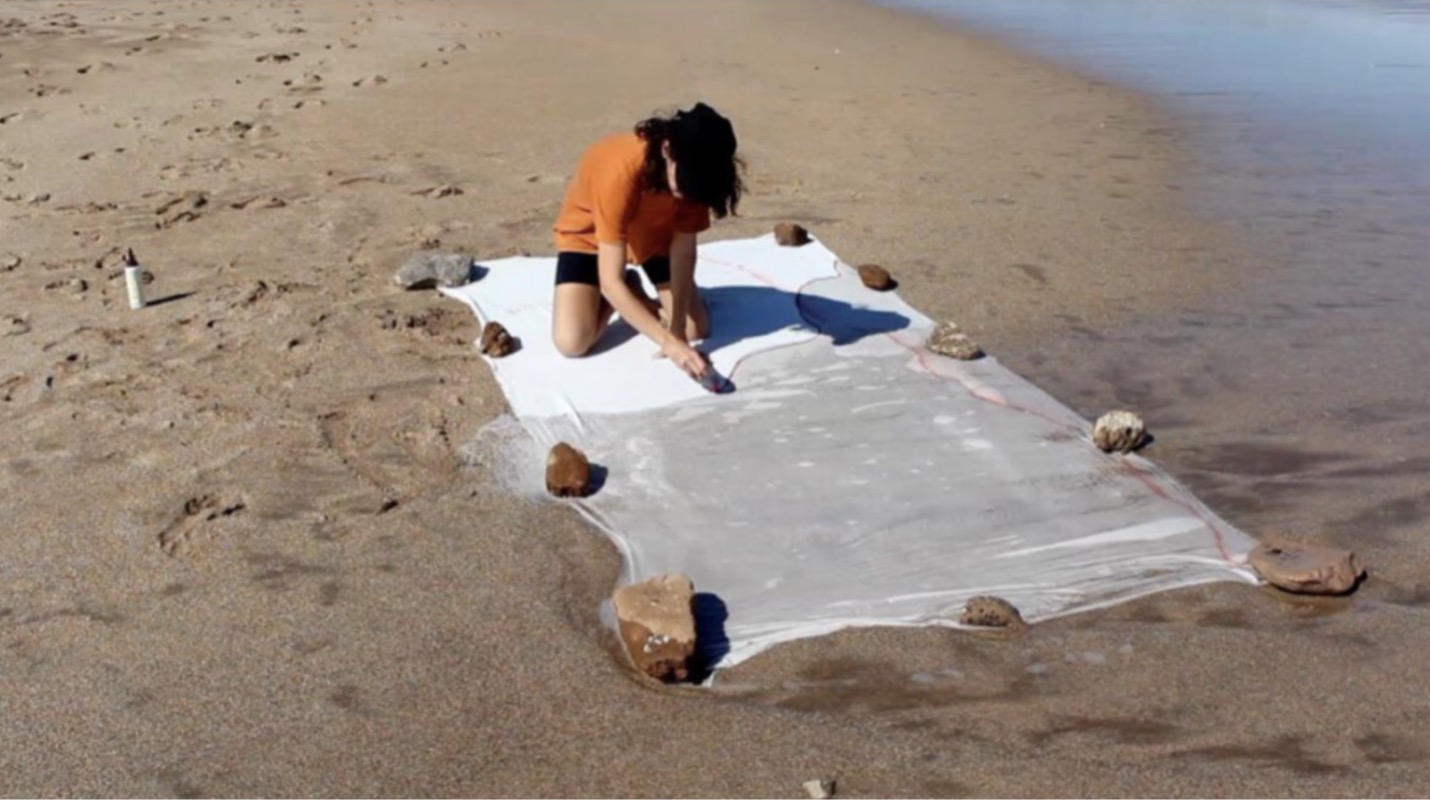An 18th-century Qing dynasty Chinese jadeite incense container, or censer, which had been missing for 30 years, was safely returned to the Harvard Art Museums on January 21st at a transfer ceremony attended by museum and government officials.
The censer was found to be missing from its display case in the Fogg Museum on November 26, 1979. Museum officials immediately notified local authorities of a suspected theft and registered the lost object with Interpol and with the International Foundation for Art Research’s stolen item database, the Art Dealers’ Association of America, and other organizations. Nothing was heard of it for 30 years, however, until the work resurfaced in 2009 at Sotheby’s auction house in Hong Kong.
The censer’s journey back to the Harvard Art Museums began when Sotheby’s was alerted that an object in its possession matched the Fogg Museum’s censer. U.S. Homeland Security Investigations (HSI), a division of Immigration and Customs Enforcement (ICE), led an investigation involving Interpol, the U.S. Attorney’s office, and authorities in Hong Kong, and coordinated the censer’s safe return to Cambridge.
“We are very proud to be reconnecting this work of art with the Harvard Art Museums after 30 years apart,” said Bruce Foucart, HSI Boston Special Agent in Charge, at the ceremony. “This event marks yet another significant milestone in the legacy of our agency. HSI will continue to investigate cases involving stolen art and cultural property from around the world and return the objects to their rightful owners.”
The censer was given to the Fogg Museum in 1942 by Ernest B. Dane and Helen Pratt Dane, together with hundreds of other Chinese jade and stone works from their collection. The gift commemorated Mr. Dane’s 50th Harvard Reunion. Ernest Dane, Harvard Class of 1892, was a Boston-area businessman who served as president of the Boston Symphony Orchestra and as a trustee of the New England Conservatory of Music. Additional works were bequeathed to the Fogg by Helen Pratt Dane upon her death in 1950. The censer will be available by appointment for in-person viewing and study beginning this fall when the new Harvard Art Museums opens.
“We are truly grateful for the engagement and collaboration with Immigration and Customs Enforcement and the U.S. Attorney’s Office over many months while we worked through the necessary channels to return the censer,” said Thomas W. Lentz, director of the Harvard Art Museums. “Because of their efforts, the censer rejoins our permanent collections just before we open the doors to our newly renovated, state-of-the-art facility this fall, when it will be accessible once again to students, faculty, and scholars.”



